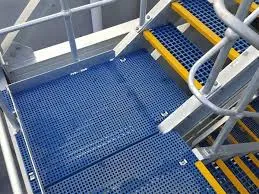
-
 Afrikaans
Afrikaans -
 Albanian
Albanian -
 Amharic
Amharic -
 Arabic
Arabic -
 Armenian
Armenian -
 Azerbaijani
Azerbaijani -
 Basque
Basque -
 Belarusian
Belarusian -
 Bengali
Bengali -
 Bosnian
Bosnian -
 Bulgarian
Bulgarian -
 Catalan
Catalan -
 Cebuano
Cebuano -
 China
China -
 China (Taiwan)
China (Taiwan) -
 Corsican
Corsican -
 Croatian
Croatian -
 Czech
Czech -
 Danish
Danish -
 Dutch
Dutch -
 English
English -
 Esperanto
Esperanto -
 Estonian
Estonian -
 Finnish
Finnish -
 French
French -
 Frisian
Frisian -
 Galician
Galician -
 Georgian
Georgian -
 German
German -
 Greek
Greek -
 Gujarati
Gujarati -
 Haitian Creole
Haitian Creole -
 hausa
hausa -
 hawaiian
hawaiian -
 Hebrew
Hebrew -
 Hindi
Hindi -
 Miao
Miao -
 Hungarian
Hungarian -
 Icelandic
Icelandic -
 igbo
igbo -
 Indonesian
Indonesian -
 irish
irish -
 Italian
Italian -
 Japanese
Japanese -
 Javanese
Javanese -
 Kannada
Kannada -
 kazakh
kazakh -
 Khmer
Khmer -
 Rwandese
Rwandese -
 Korean
Korean -
 Kurdish
Kurdish -
 Kyrgyz
Kyrgyz -
 Lao
Lao -
 Latin
Latin -
 Latvian
Latvian -
 Lithuanian
Lithuanian -
 Luxembourgish
Luxembourgish -
 Macedonian
Macedonian -
 Malgashi
Malgashi -
 Malay
Malay -
 Malayalam
Malayalam -
 Maltese
Maltese -
 Maori
Maori -
 Marathi
Marathi -
 Mongolian
Mongolian -
 Myanmar
Myanmar -
 Nepali
Nepali -
 Norwegian
Norwegian -
 Norwegian
Norwegian -
 Occitan
Occitan -
 Pashto
Pashto -
 Persian
Persian -
 Polish
Polish -
 Portuguese
Portuguese -
 Punjabi
Punjabi -
 Romanian
Romanian -
 Russian
Russian -
 Samoan
Samoan -
 Scottish Gaelic
Scottish Gaelic -
 Serbian
Serbian -
 Sesotho
Sesotho -
 Shona
Shona -
 Sindhi
Sindhi -
 Sinhala
Sinhala -
 Slovak
Slovak -
 Slovenian
Slovenian -
 Somali
Somali -
 Spanish
Spanish -
 Sundanese
Sundanese -
 Swahili
Swahili -
 Swedish
Swedish -
 Tagalog
Tagalog -
 Tajik
Tajik -
 Tamil
Tamil -
 Tatar
Tatar -
 Telugu
Telugu -
 Thai
Thai -
 Turkish
Turkish -
 Turkmen
Turkmen -
 Ukrainian
Ukrainian -
 Urdu
Urdu -
 Uighur
Uighur -
 Uzbek
Uzbek -
 Vietnamese
Vietnamese -
 Welsh
Welsh -
 Bantu
Bantu -
 Yiddish
Yiddish -
 Yoruba
Yoruba -
 Zulu
Zulu
drill rod connections understanding the basics and its
Understanding Drill Rod Connections The Basics
Drilling is a fundamental operation in various industries, including mining, oil and gas, and construction. One of the essential components of drilling operations is the drill rod. The drill rod connects the drill bit to the surface equipment, transferring rotational power and ensuring efficient drilling. Understanding drill rod connections is crucial for the effectiveness and safety of drilling operations.
What is a Drill Rod?
A drill rod is a cylindrical metal bar that serves as the primary means of transferring force from the drilling machine to the drill bit. Made from high-strength steel or other durable materials, drill rods are designed to withstand the immense pressures and stresses encountered during drilling. The function of drill rods extends beyond just connecting components; they must also maintain integrity under the harsh conditions of drilling, including exposure to extreme temperatures, corrosive substances, and high torque requirements.
Types of Drill Rod Connections
Drill rod connections serve as the link between individual rods, allowing them to be joined together to form a longer string of drill rods. The type of connection used can greatly influence the efficiency of a drilling operation. There are several types of drill rod connections, including
1. Threaded Connections This is one of the most common types of connections. The ends of drill rods are machined with male and female threads, allowing them to be screwed together. Threaded connections are easy to assemble and disassemble, making them a popular choice in many drilling operations. However, they require proper alignment and maintenance to prevent wear and tear.
2. Welded Connections In some cases, drill rods may be welded together to create a permanent bond. This type of connection is less common due to its inability to be easily disassembled, but it provides a robust solution for environments where vibration and movement are significant. Welded connections require a high level of skill and precision to ensure structural integrity and prevent failures.
drill rod connections understanding the basics and its

3. Pin and Box Connections This connection involves a pin and box design, where one end of the drill rod is shaped like a pin that fits securely into a receptacle at the other end. This type of connection is known for its strength and reliability, particularly in high-impact drilling scenarios.
4. Coupling Connections These involve a coupling device that connects two drill rods without the need for threading or welding. Couplings can be used in conjunction with other types of connections, enhancing the overall strength and versatility of the drill rod assembly.
Importance of Proper Connection
The integrity of drill rod connections is paramount for a successful drilling operation. A failure in any connection can lead to significant safety hazards, including drill rod breakage or separation, potentially causing damage to equipment or injuring personnel. Additionally, improper connections can lead to increased downtime and costs associated with repairs and maintenance.
To ensure the longevity and effectiveness of drill rod connections, regular inspections and maintenance are essential. Operators must ensure that connections are free of debris, corrosion, and wear. Proper torque specifications must also be adhered to during assembly to prevent over-tightening or under-tightening, both of which can create significant risks.
Conclusion
In summary, the importance of understanding drill rod connections cannot be overstated. These connections are integral to the efficiency and safety of drilling operations. With various connection types available, each with its own advantages and disadvantages, choosing the right connection method for specific drilling conditions is crucial. By prioritizing proper maintenance and inspection of drill rod connections, operators can enhance the safety and effectiveness of their drilling activities. As the industry advances, continuous learning and adaptation will play key roles in optimizing drilling operations and minimizing risks, ultimately leading to more productive outcomes in the demanding world of drilling.









